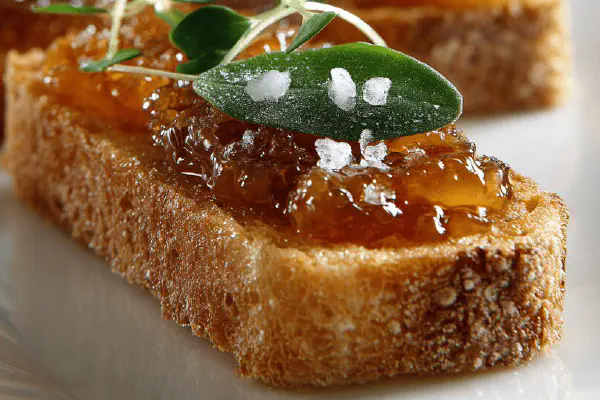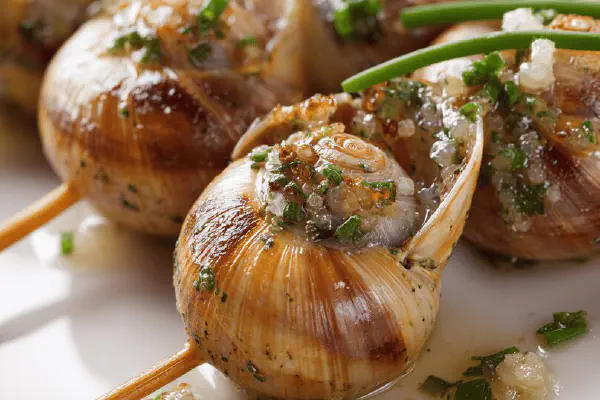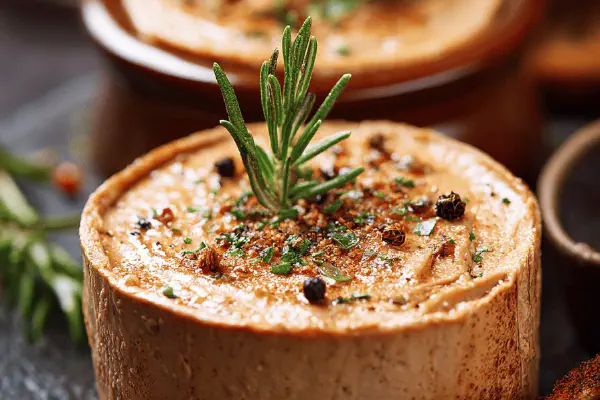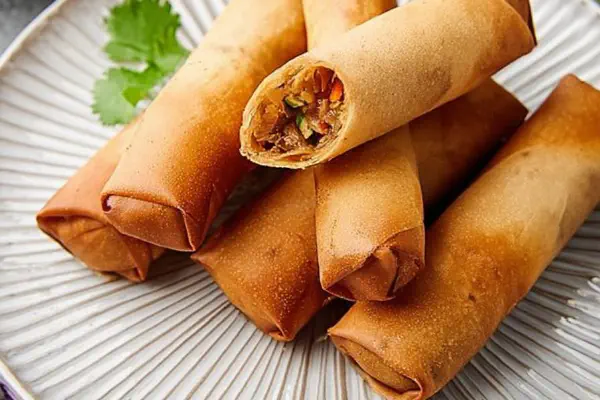Torchon Foie Gras Twist
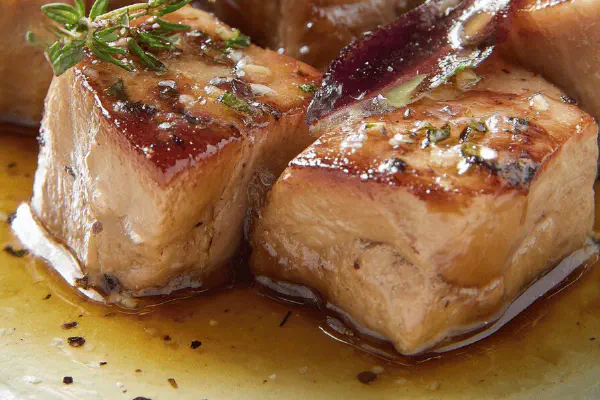
E
By Emma
Certified Culinary Professional
•
Recipe tested & approved
Foie gras poached in a white wine and chicken stock mix, wrapped in cloth. Marinated overnight, cooked at steady 57 °C for 20 minutes. Twist with citrus and fresh thyme | 7 servings | Gluten, dairy, egg-free. Uses dry white wine instead of Sauternes. Bone broth replaces chicken stock.
Prep:
20 min
Cook:
20 min
Total:
Servings:
7
#foie gras
#French
#appetizer
Veins pulled, trimmed. Salt and pepper apply. Wine swapped dry, no sweet notes here. Lemon zest and thyme inside the mix, unexpected brightness. Wrapped tight, wrapped right. Poached low. Timing flexible, 20 minutes simmer. Watch temps. 57 °C steady. Cooler waits follow — a day in fridge. Citrus threads in the background. Layers shift in brief slices, textural snaps, rich fat melting but firm. Serve with crisp toast or tart preserves. No nuts. No gluten. No dairy. No eggs. French in soul but modern edges, crisp, light. Simple, no fuss. Toast smoky, foie gras silky. The quiet art of quiet heat.
Ingredients
- 1 foie gras approx 350 g (12 oz)
- 1 teaspoon salt
- ½ teaspoon cracked black pepper
- 180 ml (¾ cup) dry white wine
- 150 ml (⅔ cup) bone broth
- Zest of 1 lemon
- 2 sprigs fresh thyme
- Clean kitchen cloth
- Plastic wrap
About the ingredients
Foie gras weight shaved to 350 g, smaller than Classic. Salting moderate, just a teaspoon keeps balance — not overdone. Dry white wine replaces Sauternes — less sweet, sharper acidity. Bone broth swaps standard chicken stock, deeper, earthier, less salty. Lemon zest amplifies brightness inside, thyme adds a fresh green note. Cloth must be spotless, cotton preferred, no lingering odors. Wrap tight in plastic after cloth, to keep shape and moisture. No nuts, gluten traced from toast only, safe replacements easy. Timing exact can vary, thermometer critical — low heat poach is science and patience. Each element deliberate, subtle.
Method
- 1. Carefully tease out veins from foie gras with fingers and dull knife.
- 2. Scatter salt, black pepper over foie gras. Add lemon zest and thyme sprigs.
- 3. Place in bread pan; pour dry white wine over. Cover. Refrigerate 18 to 24 hours for marination.
- 4. Remove foie gras, drain liquid but keep for poaching.
- 5. Wrap foie gras tightly in clean cloth, shape cylinder. Seal with plastic wrap.
- 6. Combine marinade and bone broth in saucepan. Insert thermometer. Heat to steady 57 °C (135 °F).
- 7. Submerge wrapped foie gras. Poach gently 20–25 minutes until center liquid hits 57 °C.
- 8. Remove, cool at room temp briefly then fridge minimum 20 hours to set.
- 9. Cut slices. Serve with toasted brioche or citrus jam.
Cooking tips
Veins removed with fingers careful, dull knife teasing gently. Don’t rush, veins stubborn. Salt and pepper distribute over whole surface, then lemon zest and thyme sprigs tucked on top. Marinate in dry white wine, not sweet, eliminates usual sugar notes — changes flavor balance. Foie gras wrapped tightly in kitchen cloth — this shapes it smoothly — then wrapped in plastic, seals moisture inside. Poaching bath prepared by mixing marinade and bone broth, thermometer placed early. Heating slow, held steady at 57 °C, monitored carefully, poaching time between 20 and 25 minutes, no more. Cooling brief at room temp before refrigeration prevents sweating inside wrap. Minimum 20 hours chilling solidifies texture. Slicing cold yields clean edges. Serve quickly once cut. Does not overcook or melt away.
Chef's notes
- 💡 Prepare foie gras by carefully removing veins. Use dull knife. Too much pressure? Liver easily tears. Be patient, slowly teasing. Ensure no bits left. Work over a clean surface. Avoid extra handling.
- 💡 Marination is key. Dry white wine preferred. Not sweet like Sauternes. Zest of lemon helps brighten flavors. Fresh thyme balances richness. Airtight cover essential during chilling. 18 to 24 hours for best results.
- 💡 Poaching needs precision. Maintain steady 57 °C. Use a good thermometer. Don’t rush the heat. Liquid should feel that low simmer. A few minutes above? Foie gras might toughen. Best texture at right temperature.
- 💡 Cooling matters too. After poaching quickly cool at room temp. Avoid sweating inside wrap. Then cold storage for minimum 20 hours. Solidifies texture. Slicing cold gives the best edges. Serve right after cutting.
- 💡 Serving suggestions vary. Crispy brioche toast pairs well. The contrast of textures. Or citrus preserves brings brightness. Balance rich fat with tart flavor. Next to pickles or even herbs. Experiment with combinations.
Common questions
What to do if foie gras tears?
Handle gently. Use fingers plus dull knife. Remove veins slowly. If it happens? Don’t stress. Shape can still be adjusted during wrapping.
Can I use other wines?
Stick to dry. Not sweet. Other whites might change flavor. Try Sauvignon Blanc or Pinot Grigio. Sweet wines alter taste balance. Be cautious with substitutions.
How to store leftovers?
Wrap tightly. Keep in fridge. Tight seal prevents dryness. Good for several days. Just slice as needed. Freeze for longer storage - up to 3 months.
What if I miss the poaching time?
Timing’s tight. Too long? Might end up overcooked. Better to set a timer. Check internal temp often. Avoid rising above 57 °C for best results.
